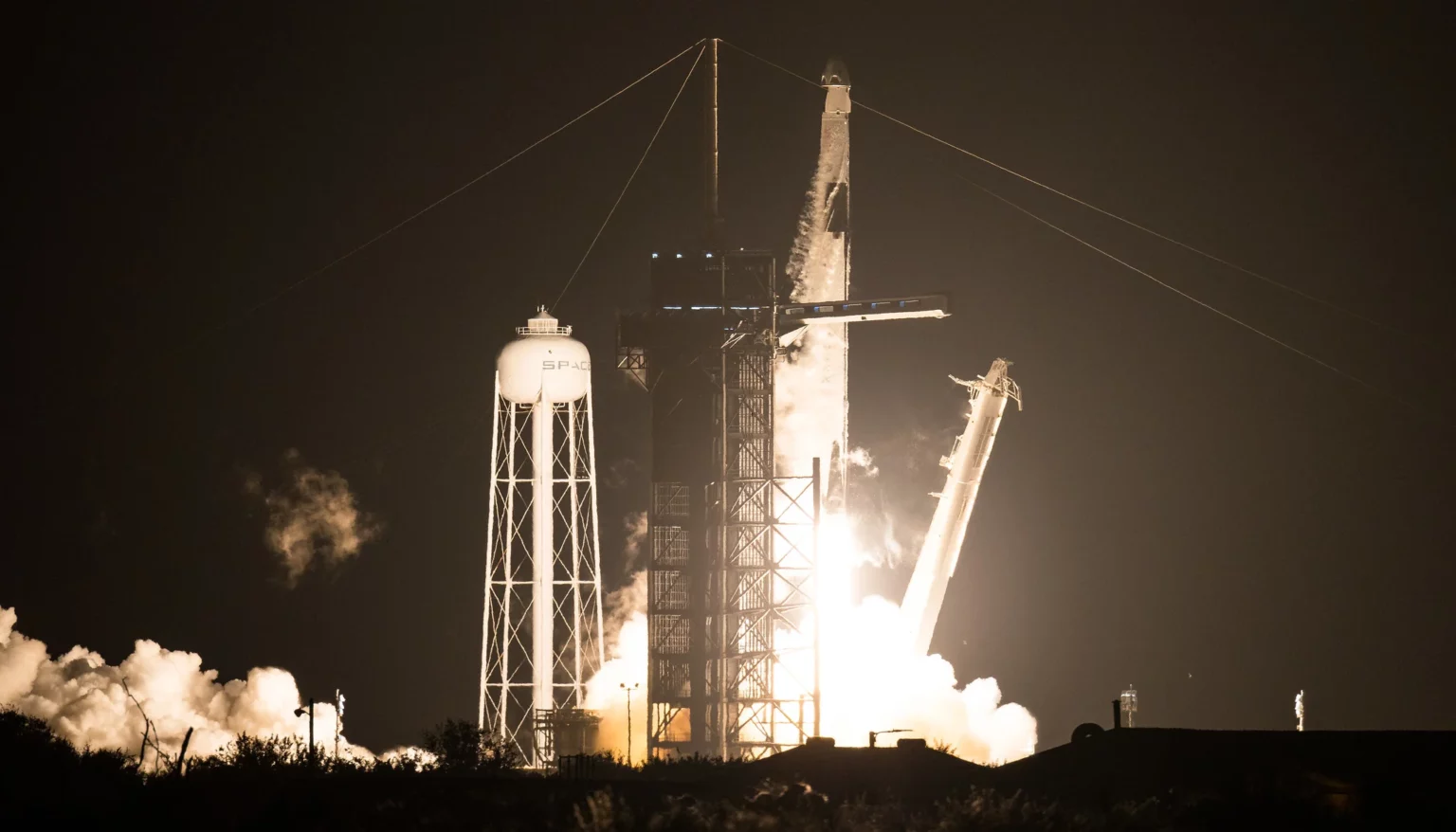NASA and Elon Musk’s SpaceX achieved another remarkable milestone with the successful launch of the Crew-7 mission. On a momentous Saturday, the SpaceX Dragon spacecraft embarked on its journey toward the International Space Station (ISS), carrying a diverse crew of four astronauts hailing from different corners of the world. The launch, which took place at NASA’s Kennedy Space Center in Florida, witnessed the Dragon spacecraft propelled into space by the Falcon 9 rocket. Around 10,000 spectators gathered to witness the event, while inside the mission control room, cheers erupted as the Dragon craft elegantly separated from its rocket, solidifying its place in orbit.
Under the adept leadership of American astronaut Jasmin Moghbeli, the Crew-7 mission comprises an eclectic team of space explorers. Joining Moghbeli are Denmark’s Andreas Mogensen, Japan’s Satoshi Furukawa, and Russia’s Konstantin Borisov. Post-separation, Moghbeli conveyed a profound sense of camaraderie among the crew, underscoring, “We may have four crew members on board from four different nations… but we’re a united team with a common mission.”
The rescheduling of the launch to Saturday provided engineers with an extra day to meticulously review a critical component of the Crew Dragon capsule’s environmental control and life support system. This meticulous approach reflects the commitment to safety and precision that is a hallmark of space exploration endeavors.
The Crew-7 launch bears particular significance for both Moghbeli and Borisov, marking their inaugural journey into space. Moghbeli, an accomplished Naval test pilot, expressed her long-standing aspiration to venture into space. She shared her palpable excitement about the prospect of viewing Earth from the unique vantage point of space and experiencing the sensation of weightlessness. “One of the things I’m most excited about is looking back at our beautiful planet,” she reflected.
The Crew-7 mission stands as the latest in a series of successful launches for SpaceX, underscoring the company’s capability to execute intricate space missions. Through a commercial crew program, NASA collaborates with SpaceX to reduce reliance on Russian rockets for astronaut transportation, a strategic move following the conclusion of NASA’s iconic space shuttle program in 2011. While Boeing is another contracted partner, delays and technical challenges have hindered the launch of their crewed missions.
Borisov’s presence on this mission marks a significant step in international collaboration, as he becomes the third Russian astronaut to embark on a journey aboard a SpaceX Crew Dragon capsule mounted on a Falcon 9 rocket.
The six-month mission on the ISS will be marked by a range of scientific endeavors. Crew-7 members are poised to engage in experiments exploring microorganisms released through the space station’s life-support system vents, as well as investigating the physiological nuances of sleep in space compared to on Earth.
This mission underscores the enduring legacy of the ISS. Since its launch in 1998, the station has served as a hub for international cooperation and scientific research. As the ISS’s operational timeline extends until at least 2030, plans are already underway to develop commercial space stations that will carry the mantle of space exploration into the future.




